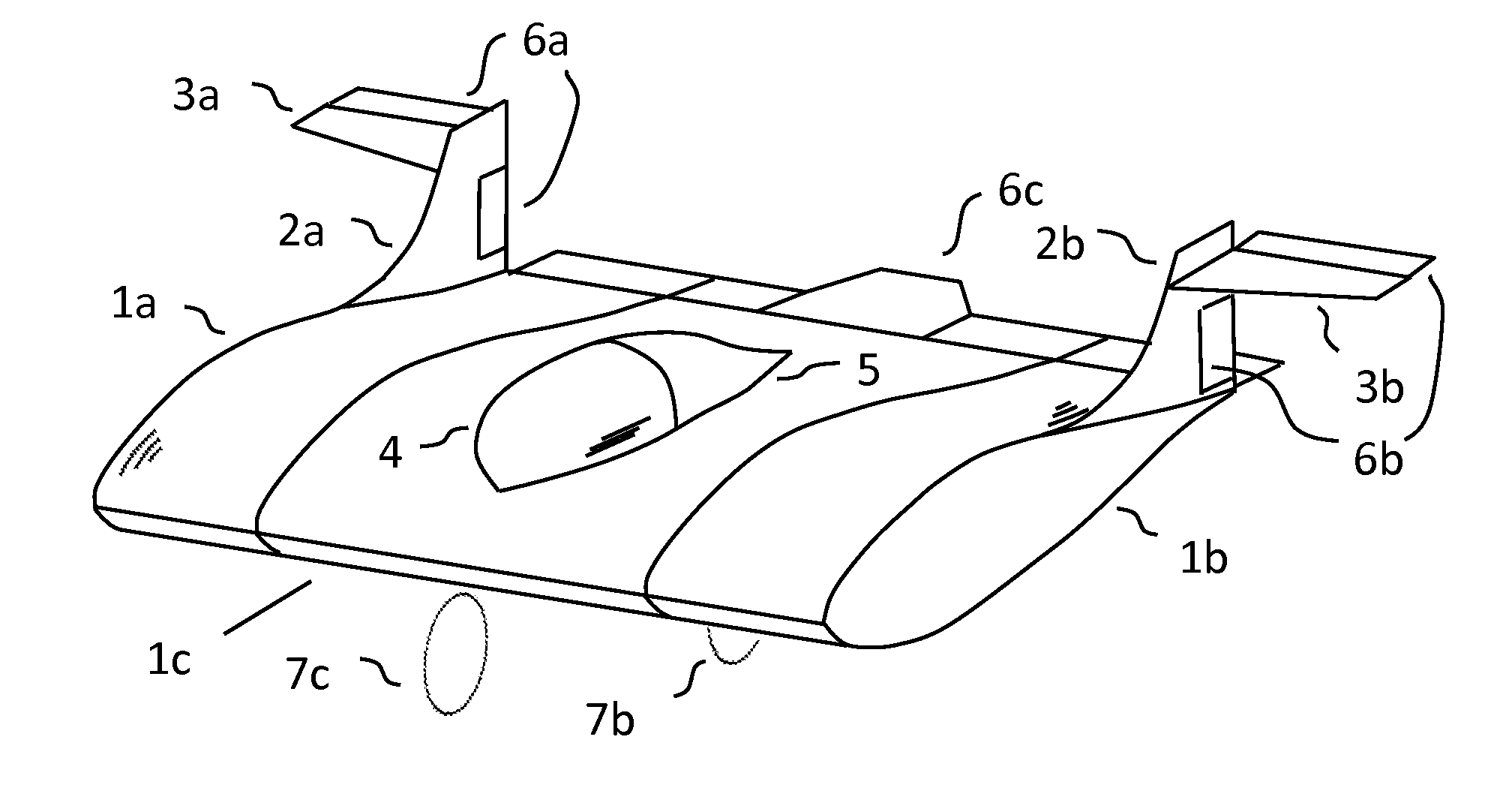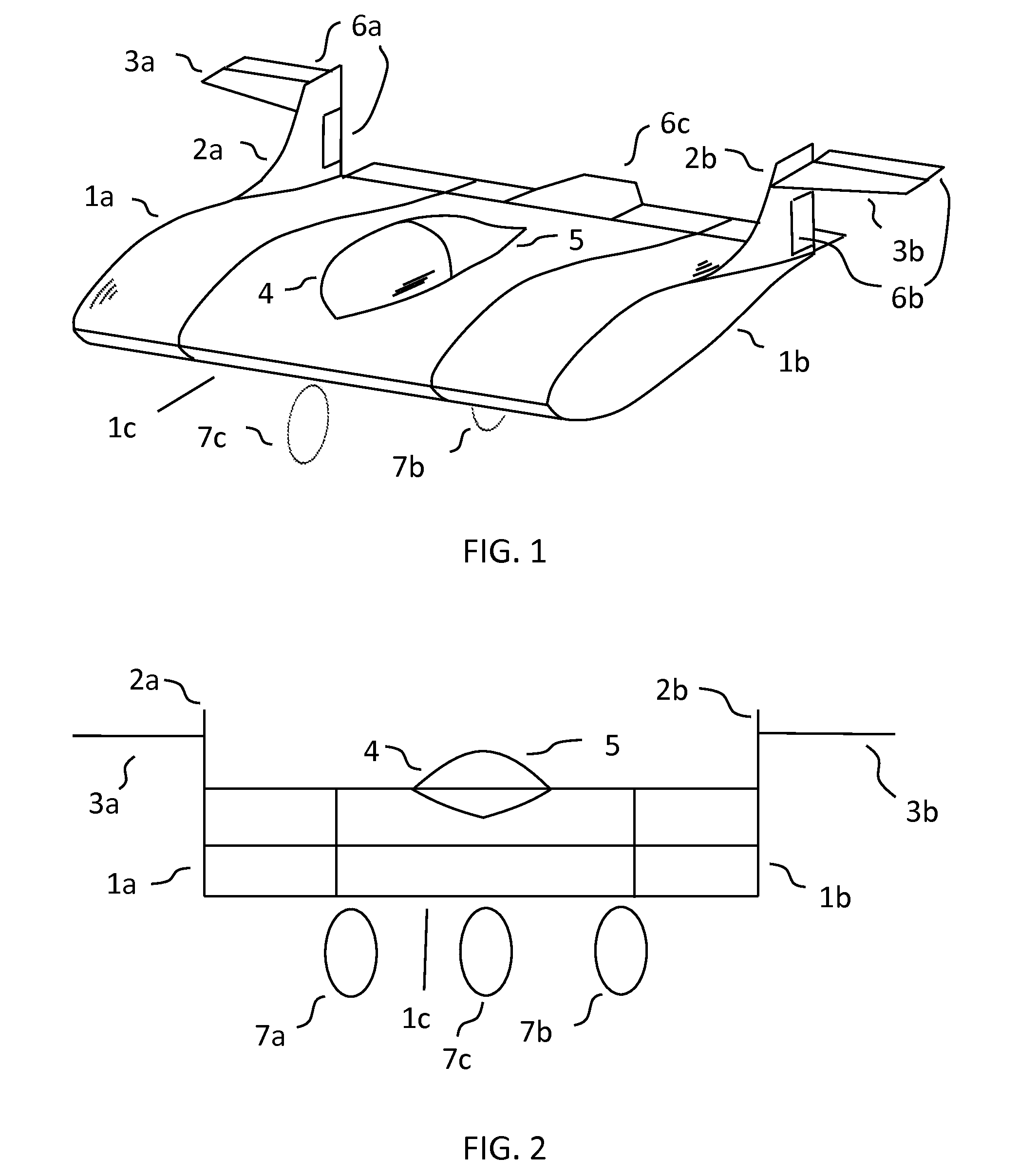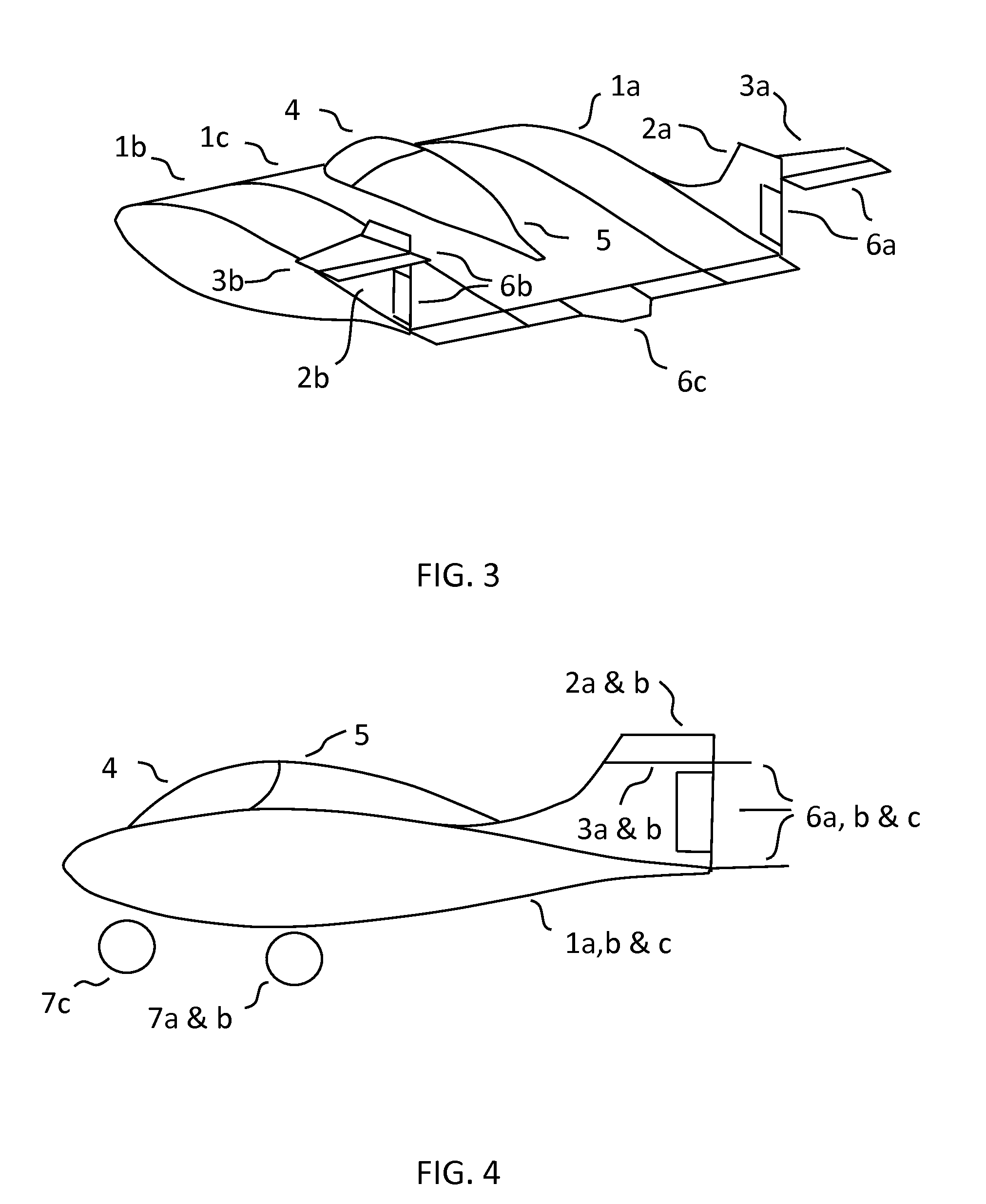Stable Low Aspect Ratio Flying Wing
- Summary
- Abstract
- Description
- Claims
- Application Information
AI Technical Summary
Benefits of technology
Problems solved by technology
Method used
Image
Examples
example 1
[0051]A first embodiment example is a low aspect ratio flying wing leveraging aspects of disclosures without dihedral, without wing sweep, and without boundary layer control.
[0052]FIG. 1 is a front perspective of a first embodiment example illustrating portions of claimed disclosures. 1a, 1b, and 1c make up the main structure wing with 1a and 1b sections being laterally extendable and retractable to reduce or enlarge wing profile and surface area. 2a and 2b are possible vertical stabilizers. 3a and 3b are possible horizontal stabilizers configured outside of main structure wing turbulent boundary layer and vortices for improved control and efficiency. Item 4 illustrates one possible aerodynamic canopy configuration particularly useful for, but not limited to, manned versions of the vehicle. Item 5 illustrates one possible aerodynamic canopy fairing configuration to preserve aerodynamic efficiency of present canopies. 6a, 6b and 6c are possible configurations for moveable surfaces to...
example 2
[0058]A second embodiment example is a low aspect ratio flying wing leveraging aspects of disclosures with dihedral, with wing sweep, and without boundary layer control. Dihedral and wing sweep angles are selected from within the claimed disclosures to illustrate one possible variation.
[0059]FIG. 7 is a front perspective of a second embodiment example illustrating portions of claimed disclosures. 10a, 10b, and 10c make up the main structure wing with 10a and 10b sections being laterally extendable and retractable to reduce or enlarge wing profile and surface area. 2a and 2b are possible vertical stabilizers. 3a and 3b are possible horizontal stabilizers configured for improved control and efficiency. Item 4 illustrates one possible aerodynamic canopy configuration particularly useful for, but not limited to, manned versions of the vehicle. Item 5 illustrates one possible aerodynamic canopy fairing configuration to preserve aerodynamic efficiency of present canopies. 6a, 6b and 6c ar...
example 3
[0065]A third embodiment example is a low aspect ratio flying wing leveraging aspects of disclosures without dihedral, without wing sweep, and with boundary layer control.
[0066]FIG. 13 is a front perspective of a third embodiment example illustrating portions of claimed disclosures. 1a, 1b, and 1c make up the main structure wing with 1a and 1b sections being laterally extendable and retractable to reduce or enlarge wing profile and surface area. 2a and 2b are possible vertical stabilizers. 3a and 3b are possible horizontal stabilizers structure wing turbulent boundary layer and vortices for improved control and efficiency. Item 4 illustrates one possible aerodynamic canopy configuration particularly useful for, but not limited to, manned versions of the vehicle. Item 5 illustrates one possible aerodynamic canopy fairing configuration to preserve aerodynamic efficiency of present canopies. 6a, 6b and 6c are possible configurations for moveable surfaces to control vehicle orientation ...
PUM
 Login to View More
Login to View More Abstract
Description
Claims
Application Information
 Login to View More
Login to View More - R&D
- Intellectual Property
- Life Sciences
- Materials
- Tech Scout
- Unparalleled Data Quality
- Higher Quality Content
- 60% Fewer Hallucinations
Browse by: Latest US Patents, China's latest patents, Technical Efficacy Thesaurus, Application Domain, Technology Topic, Popular Technical Reports.
© 2025 PatSnap. All rights reserved.Legal|Privacy policy|Modern Slavery Act Transparency Statement|Sitemap|About US| Contact US: help@patsnap.com



